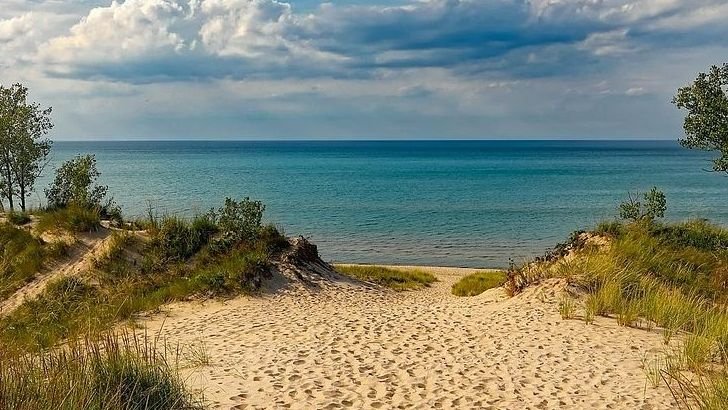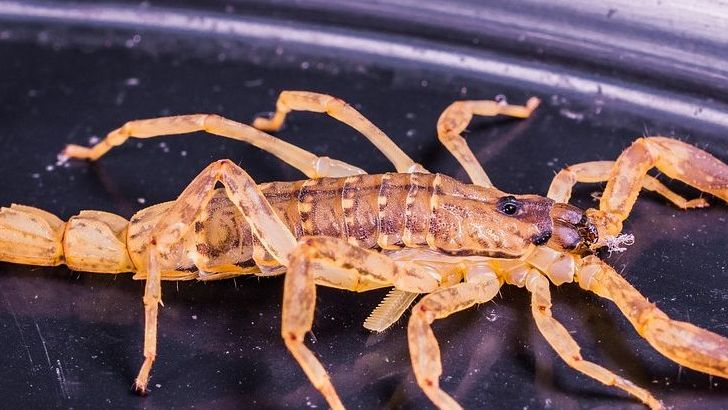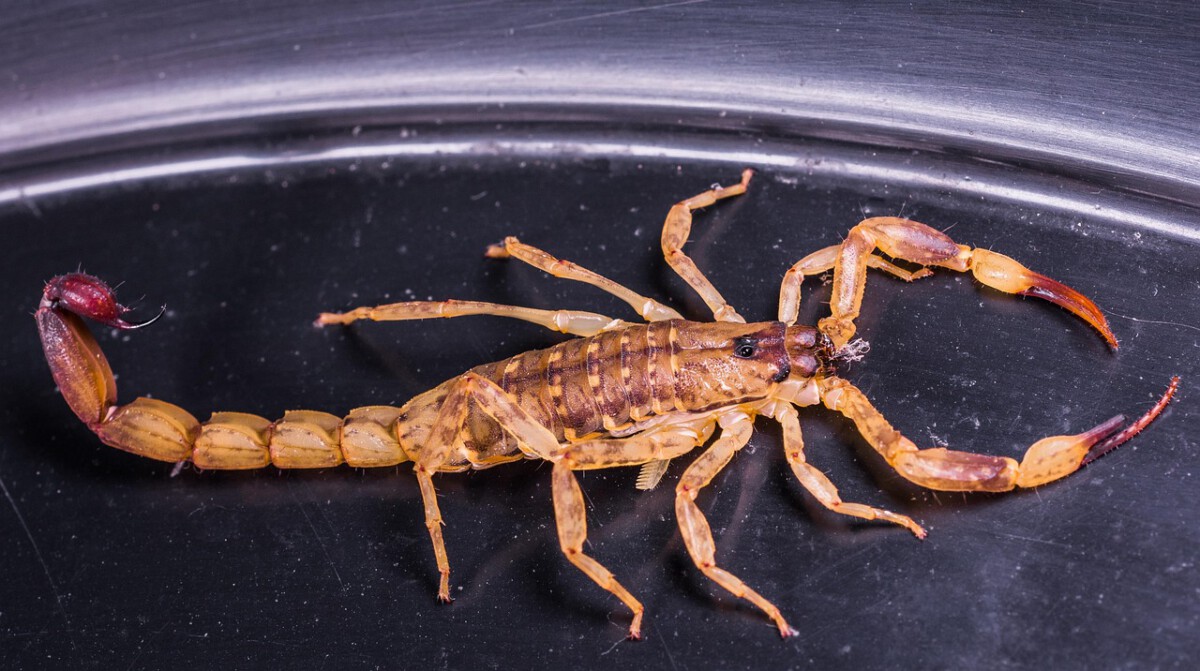The dream of pristine American beaches is colliding hard with reality in 2025.
“What we observed in April was far and away greater than anything the satellites have recorded over the last 25 years and presumably ever as far as what would be expected” according to University of South Florida researchers.
Meanwhile, accommodation costs are skyrocketing, with some destinations commanding over $600 per night. From contaminated waters to rotting seaweed to deadly rip currents, here are the 31 beaches that exemplify why 2025 might be the year to reconsider that coastal vacation.
31. Gulfport West Beach, Mississippi – Bacteria Paradise

Picture this: you’ve driven hours to reach what should be a pristine Gulf Coast shoreline, only to find warning signs telling you to stay out of the water. Gulfport West Beach has become notorious for its dangerous bacteria levels.
According to reports, bacteria levels may be hazardous at Gulfport West Beach, with advisories potentially issued by environmental authorities. The situation gets worse after heavy rainfall when contamination spikes dramatically.
- Seaweed Issues: While seaweed isn’t the primary concern here, stagnant water conditions create perfect breeding grounds for algae blooms
- Pricing: Budget-friendly destination at around $80-120 per night for hotels
- Rip Currents: Generally calm waters, but bacterial contamination makes swimming inadvisable anyway
30. Kalapaki Beach Park, Kauai – Airport Runway Blues

Sure, Hawaii sounds dreamy until you realize you’re lounging less than a mile from airplane engines roaring overhead every few minutes. The Hawaiian island of Kauai features untarnished coastlines of pristine nature – but Kalapaki Beach Park is not one of them. Sited less than a mile from Lihue Airport, this beach offers more jet fuel fumes than tropical paradise.
The constant noise pollution combined with fuel emissions settling on the water creates an environment that’s far from the Hawaiian dream most visitors expect.
- Seaweed Conditions: Minimal seaweed problems due to good water circulation
- Price Range: The average statewide cost of a hotel room in Hawaii is roughly $375/night. Kauai – Price is approximately 98.63% of the statewide average – expect $370+ per night
- Rip Current Risk: Moderate risk during high surf conditions
29. Pass Christian Beach, Mississippi – The Spreading Contamination

What started as isolated pollution problems have now spread across Mississippi’s Gulf Coast like wildfire. In mid-February 2025, the Biloxi Sun Herald reported that additional advisories were freshly issued for additional Mississippi beaches – Bay St. Louis, Pass Christian, and Long Beach.
The contamination appears linked to failing wastewater systems and septic problems that create a domino effect of pollution along the entire coastline.
- Seaweed Status: Heavy algae blooms during summer months due to nutrient pollution
- Cost Factor: Very affordable – $60-90 per night, but you get what you pay for
- Rip Current Danger: Low to moderate risk, though water quality makes swimming dangerous
28. Long Beach, Mississippi – The Pollution Spreads

Long Beach has joined the growing list of Mississippi shores where a simple swim can land you in the hospital. The beach community that once prided itself on family-friendly waters now faces an environmental crisis.
Recent testing suggests bacteria levels here may stem from multiple sources including wastewater treatment failures and septic system overflows. What was once a hidden gem has become a cautionary tale.
- Seaweed Problems: Increasing algae presence due to nutrient runoff
- Budget Impact: Still affordable at $70-100 per night, but health risks aren’t worth the savings
- Rip Current Concerns: Generally safe from currents, unsafe from contamination
27. Bay St. Louis Beach, Mississippi – Triple Threat

Bay St. Louis completes the trifecta of newly contaminated Mississippi beaches that received fresh pollution advisories in early 2025. This historic coastal town has watched its main tourist attraction become a liability.
The combination of industrial runoff, failing infrastructure, and climate-related flooding has created a perfect storm of contamination that shows no signs of improving.
- Seaweed Situation: Thick mats of dying algae create foul odors during decomposition
- Price Point: Budget destination $65-95 per night for accommodations
- Rip Current Risk: Minimal current dangers, maximum contamination concerns
26. La Jolla Cove, San Diego – Paradise Lost to Pollution

It breaks your heart to see such a naturally beautiful place succumb to human-made problems. La Jolla Cove in San Diego and Padre Island National Seashore in Texas also featured among the dirtiest beaches according to recent analysis of visitor complaints.
This once-pristine snorkeling paradise now struggles with sea lion waste, urban runoff, and overcrowding that has damaged the delicate marine ecosystem.
- Seaweed Conditions: Minimal seaweed but increasing algae blooms from nutrient pollution
- Cost Analysis: Expensive area – expect $300-500+ per night for nearby hotels
- Rip Current Safety: Moderate risk in rocky areas, especially dangerous due to slippery surfaces
25. Padre Island National Seashore, Texas – Wilderness Wasted

You’d think a National Seashore designation would guarantee pristine conditions, but Padre Island has fallen victim to pollution from multiple directions. The 70-mile stretch that should represent America’s best coastal preservation has instead become a case study in environmental failure.
Plastic debris washing ashore combined with contaminated runoff from nearby development has transformed this protected area into something resembling a garbage dump more than a nature preserve.
- Seaweed Issues: Massive sargassum deposits create rotting piles along shoreline
- Pricing Structure: Camping $30/night, nearby hotels $120-200/night
- Rip Current Hazards: Strong and unpredictable currents along entire coastline
24. Miramar Beach, Florida – Death Without Sharks

Despite experiencing seven surf zone fatalities, Miramar Beach was the only location in the top 10 that didn’t have a recorded shark attack. This means the water itself is killing people through rip currents and dangerous surf conditions.
The emerald green waters that look so inviting in vacation photos hide deadly underwater topography that creates sudden, powerful currents capable of dragging even strong swimmers out to sea.
- Seaweed Presence: Moderate sargassum during peak season (June-August)
- Cost Reality: High-end destination – $250-600+ per night during peak season
- Rip Current Factor: Seven surf zone fatalities recorded – extremely dangerous currents
23. Indialantic Boardwalk, Florida – Surfer’s Nightmare

Visitors need to be wary of the beach’s powerful currents and frequent marine wildlife encounters, with 9 surf zone fatalities and 30 shark attacks in its history. The very waves that draw surfers from across the country create deadly conditions for average beachgoers.
The boardwalk gives visitors a false sense of security, creating a developed beach environment that masks genuinely dangerous water conditions lurking just beyond the shore.
- Seaweed Challenges: Heavy sargassum accumulation traps swimmers in dangerous areas
- Price Range: Mid-range Florida destination – $180-350 per night
- Rip Current Threats: Nine surf zone fatalities recorded – extremely dangerous currents
22. Miami Beach, Florida – Fame Doesn’t Equal Safety

This image is protected by copyright! If you would like to use it, please read this first., CC BY-SA 3.0, https://commons.wikimedia.org/w/index.php?curid=5766079)
The area has recorded 17 shark attacks (more than Laguna Beach), and 13 surf-related deaths (more than New Smyrna). The global reputation of South Beach masks serious safety concerns that locals know all too well.
The combination of powerful currents, shark activity, and millions of visitors creates a recipe for disaster that the tourism industry doesn’t want to advertise.
- Seaweed Conditions: Significant sargassum problems during summer months create swimming hazards
- Pricing Impact: Premium destination – $300-800+ per night for beachfront accommodations
- Rip Current Statistics: 13 surf-related deaths recorded, moderate shark attack risk
21. Laguna Beach, Florida – Record-Breaking Fatalities

Laguna Beach was given second place for its high number of surf zone fatalities, the most reported across all 528 beaches analyzed in a comprehensive 2025 study. This isn’t just dangerous – it’s historically deadly.
39 surf zone fatalities – the most of all the 528 beaches in the study – due to its powerful rip currents and large waves.
- Seaweed Situation: Minimal seaweed but strong currents make any water conditions dangerous
- Cost Structure: Mid-tier pricing $150-280 per night
- Rip Current Reality: Holds record for most surf zone fatalities (39) among all US beaches studied
20. Daytona Beach, Florida – Racing Toward Danger

The powerful currents at Daytona Beach, on Florida’s Atlantic Coast, are blamed for 27 deaths and there have been 67 shark attacks. The same strong surf conditions that made this beach perfect for early automobile racing now create aquatic death traps for unsuspecting families on vacation.
| Danger Type | Recorded Incidents | Risk Level |
|---|---|---|
| Surf Zone Deaths | 27 | Very High |
| Shark Attacks | 67 | High |
| Hurricane Strikes | 126 | Extreme |
- Seaweed Problems: Heavy sargassum deposits during peak season create additional hazards
- Price Analysis: Moderate costs $120-250 per night, budget motels available
- Rip Current Casualties: 27 surf-zone deaths and 67 shark attacks recorded
19. Panama City Beach, Florida – Spring Break Nightmare

Strong rip currents killed four people last weekend, including three visitors from Alabama on June 21. Just two days later, a 60-year-old woman from Missouri was found dead in the water. The party atmosphere masks serious safety concerns, and intoxicated beachgoers become easy targets for dangerous rip currents.
This beach has experienced 32 surf zone fatalities, the highest in the U.S., primarily because of rip currents.
- Seaweed Accumulation: Moderate sargassum presence, worse during summer months
- Cost Factor: Variable – $80-300+ per night depending on season
- Rip Current Hazards: 32 surf zone fatalities, the highest in the U.S.
18. Santa Monica Pier, California – Sewage Spectacular

Here’s a fun historical fact that’ll ruin your beach day: the Santa Monica Pier was built in 1909, and according to some sources, may have been connected to sewage disposal infrastructure. Over a century later, pollution problems persist at this iconic location.
Heal the Bay gave this stretch of sand failing marks on its 2023-2024 Beach Report Card, as it did the year before. The environmental organization continues to document serious water quality issues.
- Seaweed Status: Limited seaweed due to pollution, but algae blooms common
- Pricing Reality: California is cheaper than traveling to California or New York but still expensive LA market – $250-500+ per night for nearby hotels
- Rip Current Concerns: Moderate risk, but water contamination is primary danger
17. Waikiki Beach, Hawaii – Human Sardine Can

Prepare to be shocked: Waikiki received the highest score of all 200 beaches across the world. The most common complaint for this gorgeous beach was its popularity – visitors say the beach is incredibly overcrowded with one person even referring to it as a human sardine can.
The beach that symbolizes Hawaiian paradise has become so packed with tourists that one visitor shared their experience on TripAdvisor, stating: “Plan to spend an hour in bumper to bumper just to get to the parking lot. And then another half hour waiting for a space”.
- Seaweed Conditions: Generally clear but water quality suffers from overuse
- Cost Analysis: The average statewide cost of a hotel room in Hawaii is roughly $375/night. Oahu – Price is approximately 68.55% of the statewide average – around $257+ per night, but beachfront properties $400-1000+
- Rip Current Risk: Low risk due to protected location, high overcrowding risk
16. Venice Beach, California – Crime Scene by the Sea

Venice Beach in California ranks as the second most complained-about beach overall, with over 60% of comments citing litter, unpleasant odors, and poor waste management. This isn’t just about cleanliness – it’s about safety and sanity.
The beach that once represented California’s bohemian spirit has devolved into a chaotic mess of homelessness, drug activity, and aggressive panhandling that makes family visits uncomfortable at best.
- Seaweed Issues: Pollution prevents healthy seaweed growth, replaced by trash accumulation
- Price Range: Moderate to expensive – $200-400+ per night
- Rip Current Safety: Low current risk, high crime and contamination risk
15. Imperial Beach, California – Cross-Border Catastrophe

This San Diego County beach has become ground zero for an international pollution crisis. Because of this cross-border situation, the sandy shore of Imperial Beach is closed as of mid-February 2025. City authorities pin the blame on operational deficiencies at the federally managed South Bay International Wastewater Treatment Plant.
The environmental disaster here is so severe that 100% of water samples taken there in 2023 failed to meet state health standards for beaches to allow recreational swimming.
- Seaweed Problems: Toxic algae blooms from sewage contamination
- Cost Impact: Cheap accommodations $90-160 per night, but beach is closed
- Rip Current Issues: Water access prohibited due to contamination
14. Monastery Beach, California – Beauty and the Beast

Known for its beauty, Monastery Beach is also one of the most dangerous beaches. Steep drop-offs and strong currents make swimming hazardous, leading to numerous drownings. The dramatic cliff-backed shoreline that makes this beach Instagram-worthy also creates deadly underwater conditions.
Local emergency responders have dubbed this “Mortuary Beach” due to the frequency of drowning incidents caused by sudden depth changes and unpredictable currents.
- Seaweed Presence: Cold water limits seaweed but kelp creates additional entanglement hazards
- Pricing Structure: Expensive Monterey area – $200-400+ per night
- Rip Current Dangers: Extremely dangerous due to steep drop-offs and strong currents
13. Ontario Beach, New York – Great Lakes, Great Problems

Situated on Lake Ontario, Ontario Beach faces water quality concerns, with high bacteria and pollutants in the water. Runoff from urban areas contributes to the issue. What should be a refreshing freshwater alternative to ocean beaches has become a contaminated mess.
The pollution from Rochester’s urban sprawl has transformed this historic beach into a health hazard where swimming advisories are more common than sunny days.
- Seaweed Conditions: Algae blooms create thick, smelly mats during summer
- Cost Reality: Affordable at $80-150 per night, but health risks offset savings
- Rip Current Risk: Minimal lake currents but dangerous contamination levels
12. South Shore Beach, Indiana – Lake Michigan Disaster

Located on Lake Michigan, South Shore Beach struggles with water quality issues and beach erosion. High bacteria levels pose health risks, and erosion has made the beach less accessible and safe. This Great Lakes destination combines the worst of both worlds: contamination and physical danger.
Industrial runoff from nearby steel mills combines with urban pollution to create a toxic cocktail that makes swimming a game of bacterial roulette.
- Seaweed Issues: Toxic algae blooms during hot weather create additional health risks
- Price Factor: Budget-friendly $70-120 per night, but medical bills could be expensive
- Rip Current Concerns: Lake currents minimal, bacteria contamination maximal
11. Myrtle Beach, South Carolina – The Only Non-Florida Entry

Simmrin Law says all of the top 25 most dangerous beaches in the U.S. are located in the Sunshine State except for one – Myrtle Beach in South Carolina. Myrtle Beach came in at 23.
With 60 miles of coastline, Myrtle Beach is a popular vacation spot, but water quality concerns plague the area. High bacteria levels have resulted in swimming advisories, and the beach often gets overcrowded.
- Seaweed Accumulation: Heavy summer seaweed deposits create swimming obstacles
- Cost Analysis: Budget to moderate – $90-200+ per night depending on season
- Rip Current Risk: Moderate current dangers, high bacteria contamination risk
10. Coronado Beach, California – Royal Pollution

This beach once hosted royalty but now hosts contamination. Leatherman cited pollution in the nearby Tijuana River as the main factor. “It’s hosted kings and queens … but now Coronado is too polluted to go in the water,” he told CNN.
The cross-border pollution crisis has transformed one of California’s most prestigious beaches into an aquatic no-go zone where the sand might be pristine but the water is poisonous.
- Seaweed Status: Pollution prevents normal marine ecosystem function
- Price Range: Premium San Diego location – $300-600+ per night
- Rip Current Conditions: Normal ocean currents, abnormal contamination levels
9. Cocoa Beach, Florida – Space Coast Hazards

While NASA launches rockets nearby, visitors are gambling with their lives in the surf. In addition to seven reported surf-zone deaths, there have been 39 shark-related incidents off the coast, making this Space Coast destination a triple threat.
The same powerful Atlantic swells that make this a world-class surfing destination create deadly conditions for families expecting a typical beach vacation.
- Seaweed Problems: Heavy sargassum deposits May through September
- Pricing Structure: High-end destination $200-450+ per night
- Rip Current Hazards: Seven surf-zone deaths recorded, extremely dangerous Atlantic currents
8. Fort Lauderdale, Florida – Spring Break Danger Zone

The “Venice of America” has waterways that can be as treacherous as its Italian namesake’s canals. Fort Lauderdale combines powerful Atlantic rip currents, increasing sargassum problems, and inflated pricing that capitalizes on its party reputation.
Spring breakers flock here unaware that the beach’s location makes it particularly susceptible to dangerous surf conditions and the worst of Florida’s seaweed invasion.
- Seaweed Situation: The peak sargassum season runs from April through September – severe problems during peak tourist season
- Cost Impact: Premium spring break pricing $250-500+ per night
- Rip Current Danger: Multiple surf zone fatalities annually from powerful Atlantic currents
7. Key West, Florida – Paradise with a Price

America’s southernmost beach paradise has become a victim of its own popularity. Key West has an average nightly price of nearly $299, though current rates often exceed $400-800+ per night, while increasing sargassum seaweed problems occur as Gulf Stream patterns change.
The very coral reefs that make snorkeling spectacular also create unpredictable current patterns that can trap inexperienced swimmers in deadly situations.
- Seaweed Conditions: A major sargassum year just means that there’s a lot of sargassum in this area that we call the Great Atlantic Sargassum Belt. It goes from Africa all the way in through the Caribbean and sometimes impacts Florida.
- Price Reality: Among most expensive US beach destinations – $400-800+ per night
- Rip Current Risk: Coral reef creates dangerous current patterns, multiple drowning incidents
6. Naples, Florida – Gulf Coast Disappointment

Despite making Dr. Beach’s top 10 list, Naples has serious problems that tourism boards don’t advertise. The Gulf Coast location means severe sargassum invasions during summer months, while the upscale reputation translates to punishing prices that can exceed $500 per night during peak season.
Red tide events, which occur with increasing frequency, can make the entire beach unusable for weeks at a time, turning expensive vacations into expensive disasters.
- Seaweed Issues: Some of that seaweed could make it to Florida and the Gulf Coast later in the summer. Ultimately, currents and wind patterns will dictate which beaches are inundated with the brown stuff.
- Cost Factor: Ultra-expensive destination $300-700+ per night
- Rip Current Concerns: Gulf waters can create unexpected current patterns during storms
5. Montauk, New York – Hamptons Hustle Gone Wrong

A 1-week oceanfront stay in Montauk will set you back $6,454, with beachfront home rentals averaging $1,205 per night and beachfront hotels averaging $639 per night. This makes Montauk more expensive than luxury European destinations.
This Long Island destination combines crushing costs with Atlantic Ocean dangers and limited beach access that makes the Hamptons look affordable by comparison.
| Accommodation Type | Average Nightly Cost | Weekly Total |
|---|---|---|
| Beachfront Hotels | $639 | $4,473 |
| Beachfront Rentals | $1,205 | $8,435 |
| Average Weekly Stay | $922 | $6,454 |
- Seaweed Problems: Atlantic sargassum plus local algae create swimming obstacles
- Pricing Structure: Montauk tops the list as the most expensive beachfront stay – averaging $922+ per night
- Rip Current Hazards: Powerful Atlantic currents, rocky shoreline increases danger
4. Santa Monica Beach, California – Overpriced Pollution

Santa Monica, California, ranks fifth among the most expensive vacation destinations in the U.S. for 2025. This iconic beachfront city, known for its picturesque pier, luxury shopping, and vibrant atmosphere, comes with a daily cost of $613.15 per person. Accommodation costs are significant, averaging $456.67 per night.
The combination of sewage contamination history, astronomical pricing, and overcrowding makes this Los Angeles icon more nightmare than dream destination.
- Seaweed Status: Pollution limits seaweed growth but increases harmful algae
- Cost Analysis: Premium pricing $456+ per night average, daily costs $613+ per person
- Rip Current Risk: Moderate ocean currents, maximum contamination and cost concerns
3. Nantucket, Massachusetts – Wallet-Draining Waters

Nantucket Town, located on the island of Nantucket south of Cape Cod, is reported to be among the most expensive destinations with accommodation costs potentially exceeding $600 per night. The second most expensive is Positano, on southern Italy’s Amalfi Coast, at $481 per night. This means Nantucket is literally more expensive than luxury European destinations.
The island’s cold Atlantic waters, strong currents, and seaweed problems during summer months hardly justify prices that exceed $700 per night for basic accommodations.
- Seaweed Conditions: Heavy seaweed accumulation during warmer months
- Price Reality: Most expensive beach destination globally at $694+ per night
- Rip Current Dangers: Dangerous Atlantic currents around island, cold water increases risk
2. Tulum, Mexico – Seaweed Apocalypse

The peak sargassum season runs from April through September. While some regions may see relief by early fall, scientists caution that unpredictable ocean patterns could extend the influx into October or even November this year. Because of the relatively high amounts of Sargassum in the tropical Atlantic, 2025 is likely another major Sargassum year.
While technically in Mexico, this destination attracts huge numbers of Americans who find their dream vacation buried under mountains of rotting seaweed that creates hydrogen sulfide gas – the smell of rotten eggs.
- Seaweed Crisis: This year is already a record for the amount of Sargassum in the central Atlantic Ocean. “What we observed in April was far and away greater than anything the satellites have recorded over the last 25 years”
- Cost Impact: Expensive eco-resort pricing $200-500+ per night
- Rip Current Risk: Dangerous cenote currents and ocean rip currents
1. New Smyrna Beach, Florida – The Triple Threat Champion

Congratulations, New Smyrna Beach – you’ve achieved the impossible trifecta of beach disasters. New Smyrna Beach on Florida’s east coast is the No. 1 most dangerous beach in the country with a total score of 76.92. The beach has recorded 277 shark attacks and 12 surf zone fatalities such as rip currents, according to Tideschart.
South of Daytona Beach, New Smyrna Beach had more shark attacks than all the other 9 beaches combined. 277 encounters were recorded there, in addition to 12 surf-zone deaths. And to complete the disaster triangle, this beach suffers from severe sargassum invasions during summer months.
| Threat Category | New Smyrna Beach | National Average |
|---|---|---|
| Shark Attacks (Total) | 277 | 12 |
| Surf Zone Deaths | 12 | 7 |
| Hurricane Strikes | 126 | 45 |
| Danger Score (out of 100) | 76.92 | 25 |
- Seaweed Situation: Heavy sargassum accumulation creates additional swimming hazards during peak sargassum season from April through September
- Cost Structure: Surprisingly expensive for such a dangerous destination $180-350+ per night
- Rip Current Reality: 277 shark attacks and 12 surf-zone deaths – statistically the most dangerous beach in America
The Sobering Reality

These 31 beaches represent more than just disappointing vacations – they’re symptoms of larger environmental and safety crises affecting American coastlines. Because of the relatively high amounts of Sargassum in the tropical Atlantic, 2025 is likely another major Sargassum year. The whole Atlantic contains 31 million metric tons of Sargassum spread over a large area.
From cross-border pollution disasters to climate-driven seaweed explosions to dangerous rip currents claiming lives annually, these beaches serve as warnings about what happens when we prioritize tourism dollars over environmental protection and public safety. Travel costs are 2% lower than they were this time last year. Squaremouth’s survey estimates the cost of a vacation in 2025 to be $7,249, yet many of these destinations charge premium prices while delivering substandard and dangerous conditions.
The next time someone suggests a beach vacation, maybe it’s worth spending a few extra minutes researching whether you’re booking a dream getaway or a potential nightmare. After all, shouldn’t paradise actually feel like paradise?







